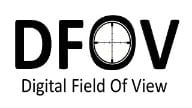About This Episode
In this episode of the Tactical Business Podcast, host Wade Skalsky sits down Henry Johns of Digital FOV. Henry reveals how a simple idea—attaching digital night vision to a rifle scope—evolved into a vital tool for SWAT and military. He details the tech’s inherent advantage: it removes shooter parallax, turning average marksmen into highly accurate assets. Discover how its real-time video transmission capability for command centers opened doors to government contracts, including becoming an approved vendor for the VA to support disabled veterans.
Insights In This Episode
- First-Mover in a Niche: Johns identified a gap in the market for affordable digital night vision, attacking a segment ignored by high-cost thermal tech companies.
- Guerrilla Market Research: His initial “marketing strategy” was direct engagement at gun shows, using customer feedback as a free and invaluable R&D department to refine the product.
- Strategic Outsourcing: Instead of vertical integration, he uses a distributed manufacturing model, outsourcing specialized components (e.g., wiring harnesses) to expert subcontractors to maintain quality and control costs.
- Navigating Advertising Bans: When locked out of mainstream digital marketing (Facebook/Google), he didn’t fight the policy; he adapted by doubling down on in-person expos and direct web marketing.


Today’s Guest
Henry Johns | Digital FOV
Founded in 2012, Digital FOV, LLC began by revolutionizing night vision with affordable, high-tech clip-ons. Overcoming industry marketing bans and a global pandemic, we pivoted with purpose. Today, we are a beacon of resilience, creating innovative assistive equipment to empower hunters of all abilities and ensure the thrill of the hunt is accessible to everyone.
Featured on the Show

About Tactical Business
Tactical Business is the weekly business show for the firearms industry. The podcast features in-depth interviews with the entrepreneurs, professionals and technologists who are enabling the next generation of firearms businesses to innovate and grow.
Episode Summary
Henry Johns: Next Level Hunting With Night Vision Clip-On
In this episode of the Tactical Business Podcast, host Wade Skalsky interviews Henry Johns, the innovative founder behind Digital FOV and its flagship product, Digital Crosshairs. Henry shares his remarkable journey from a career in software development to creating a groundbreaking digital night vision clip-on that is revolutionizing hunting, tactical operations, and adaptive sports. The conversation delves into the product’s origins, its unexpected market expansions, and the strategic business decisions that fueled its growth.
From Software to Stovetop Prototyping
Henry’s path was unplanned. After losing his offshore software business, he drew upon his deep tech background and lifelong passion for hunting. Identifying a gap in the market for affordable night vision, he conceived the idea of a digital clip-on device. With vocational electronics training from high school, Henry personally engineered the first prototypes, even hand-building the essential infrared illuminators on his stovetop. This hands-on, resourceful approach allowed him to rapidly develop a working product within just a few months.
Unlocking New Markets: Accessibility and Tactical Advantage
Initial marketing at gun shows revealed the product’s potential far beyond night hunting. Henry discovered a powerful, secondary market: the adaptive community. His device enables individuals with low vision, blindness, or mobility limitations to hunt again by displaying the rifle scope’s view on a screen. This led to a significant partnership with the VA, making the product available to disabled veterans. Furthermore, Henry identified major tactical benefits for law enforcement and SWAT teams, citing two key advantages:
- Enhanced Accuracy: The technology eliminates parallax error, significantly increasing the shooting accuracy of average marksmen.
- Real-Time Intelligence: The capability to transmit the scope’s view to a command center over a mile away provides a critical tactical advantage during operations.
A Blueprint for Resilient Entrepreneurship
Henry’s story is also a masterclass in business strategy. He deliberately avoids large retail platforms and patents, focusing instead on building a loyal customer base through exceptional direct-to-consumer service. His manufacturing model relies on a network of specialized US-based subcontractors, protecting his process and ensuring quality. Key takeaways for entrepreneurs include:
- The critical importance of direct customer engagement for feedback and loyalty.
- Treating suppliers as strategic partners to foster innovation and improve components.
- The power of resilience, allowing market feedback to guide the evolution of a product into unforeseen and impactful applications.
